In 1951, Chrysler was highly interested in the V-8 power race introducing the “Hemi’ V-8 in their Saratoga and New Yorker design lines. Hemi was one of the most powerful engines available in the industry. But Chrysler who was a conservatism decided not to change the engine for the next two years despite it being under stressed. It was until competition was high on the Hemis that Chrysler output units was raised to 235hp in the 1954 New Yorker Deluxe models. Chrysler showed the whole motoring industry how much power was lurking in 1955 in its engine until he introduced 300bhp for a new 300 Letter series supercars. This engine was highly advertised and Brewster Shaw, the owner of San Juan Motors set a record on the Daytona Two-Way Flying Mile of 117.1 mph in a Chrysler New Yorker.
In 1953, Chrysler was still using the same body style for three years which had been built by Briggs but were second in the market after GM. The design of the rooftop was such that, four tall men could ride comfortably on the cars wearing hats. It was until 1955 when Chrysler came up with the” Forward Look’ that they regained their sales over GM and Ford stylists which was styled by Virgil Exner and his designers.
The New Yorker four door sedan received quite good sales in 1953 with 37540 cars delivered compared to 1954 with only 15,788 sales. The only challenge that led to this drop was styling of the cars that many disliked. Their bodies were extraordinarily built, and nothing to complain in the drivetrain and quality materials.
Just like any car from the 1950’s, the Chrysler was not completely rustproof but had a heavy metal gauge which made them less prone to rust and rot than many of their counterparts. A ride in them is quiet, the doors shut like a bank vault and the chassis sticks quite well. Cars designed with Torqueflite are more desirable than cars equipped with the old transmission. This type of car is preferable for luxury of the engineering and integrity in its design but for a huge investment capability.
